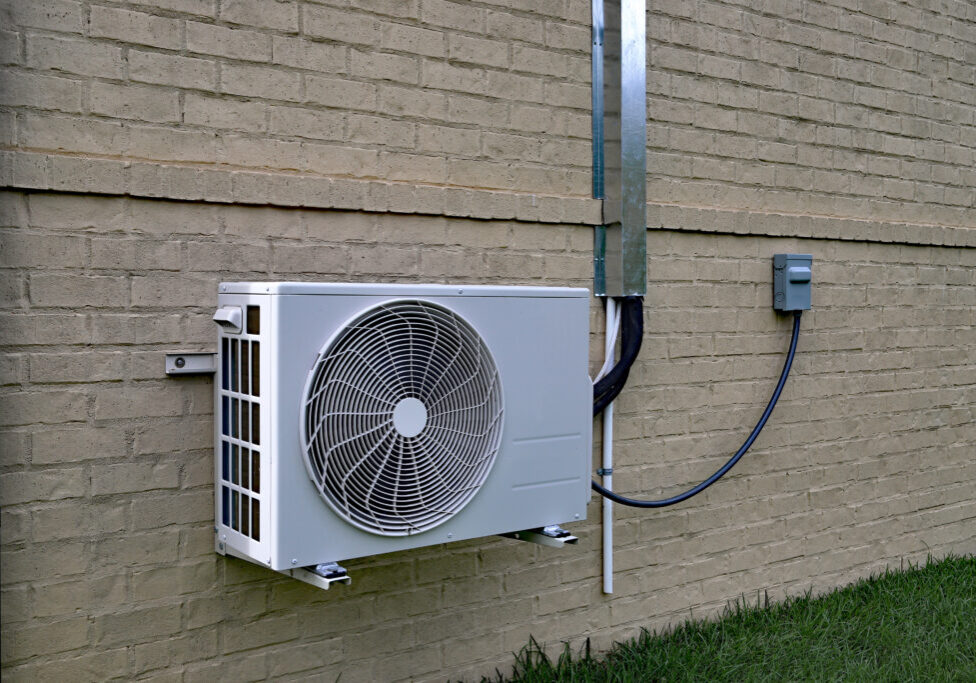Ducted vs. Ductless Mini-Split: A Comprehensive Comparison of Heating and Cooling Systems

Choosing the right heating and cooling system for your home can feel like navigating a maze of options.Between ducted and ductless mini-split systems,both offer unique paths to comfort and energy efficiency—but which one truly fits your needs?
While ducted systems hide behind walls with their elaborate maze of ducts,ductless mini-splits offer simplicity,with wall-mounted units requiring minimal installation.As we unravel these options side by side,you might find that what works best varies based on your specific needs,rather than one solution outstripping the other across every scenario.
The primary difference between ducted and ductless mini-split systems lies in their installation.Ducted systems require extensive ductwork,making them more suitable for whole-house solutions,while ductless mini-splits provide individual room control without the need for ducts,offering flexibility for zoned heating and cooling.
Overview of Ducted and Ductless Mini-Splits
When choosing a heating and cooling system for your home,understanding the basic principles behind ducted and ductless mini-split systems is crucial.Ducted systems have been the traditional standard,utilizing a network of ducts hidden within walls or ceilings to distribute conditioned air throughout the entire home.Conversely,ductless mini-split systems consist of a single outdoor unit and one or more indoor air handlers,offering a more flexible approach to temperature control.
The central difference lies in the distribution method view page .With ducted systems,air is carried through a series of vents,effectively reaching every room in the house.This makes them unobtrusive and aesthetically pleasing,as the distribution occurs behind the scenes.However,the installation process for ducted systems is often extensive and may require modifications to the home’s structure to accommodate the ductwork.
In contrast,ductless mini-split systems operate without ductwork,which greatly simplifies installation and reduces associated costs.The absence of ducts also means that they provide greater flexibility in terms of the placement of indoor units.These units can be mounted on walls,ceilings,or floors as needed,allowing for customizable configurations based on individual room requirements.
The absence of ductwork in ductless mini-splits not only simplifies installation but also eliminates potential energy losses associated with leaky or uninsulated ducts found in traditional ducted systems.From a visual standpoint,the absence of visible ductwork can also be seen as an advantage for ductless mini-split systems.They offer a sleek and modern design that can complement various interior styles without imposing on the aesthetic unity of a space.
Considering these key differences,it’s important to evaluate factors such as installation convenience,energy efficiency,layout flexibility,and long-term maintenance when deciding between these two options.
How They Operate:Ducted HVAC vs.Ductless Mini-Split
Ducted HVAC systems rely on a network of ducts to distribute heated or cooled air throughout the home.To control the temperature throughout the entire house,a central unit pushes air through the ducts to reach various rooms.However,due to the need for air to travel through these ducts,there is potential for energy loss,especially if the system has leaks or poor insulation.
The concept of ducted systems can be likened to a train delivering cargo and passengers through different carriages to reach their destinations.However open article ,just as trains can encounter delays and inefficiencies due to track blockages or signal issues,ducted systems can experience challenges related to airflow exchange,filtration,and inconsistent temperature distribution.
On the other hand,ductless mini-split systems follow a different approach.Instead of relying on a network of ducts,these systems consist of separate indoor air-handling units connected by refrigerant lines to an outdoor compressor or condenser.Each indoor unit operates independently and can be controlled separately,allowing for customized temperature settings in different rooms,known as zoning.This provides a high level of flexibility and personalized comfort throughout the home.
The operation of ductless mini-split systems could be best described as individual taxis taking passengers directly to their desired destinations with minimal delays or detours.This allows for more precise and efficient delivery of temperature control without the inefficiencies sometimes associated with central distribution systems.
By eliminating the need for ducts,ductless mini-split systems minimize the energy loss typically associated with traditional ducted systems.This leads to increased energy efficiency and reduced operating costs over time.Additionally,the ability to control each zone or room independently not only enhances comfort but also allows for significant energy savings by regulating temperatures based on specific usage patterns and occupancy.
Understanding how these systems function sheds light on their unique operational differences and helps homeowners make informed decisions when selecting the most suitable option for their heating and cooling needs in terms of efficiency,control capabilities,and personalized comfort.
Temperature Control and Efficiency
Ductless mini-split systems offer superior flexibility in temperature control.These systems boast exceptional zoning capabilities,allowing each air handler to be set to a different temperature,creating personalized climate zones tailored to specific comfort needs.
In contrast,traditional ducted systems typically rely on a single thermostat to regulate the temperature for the entire space discover more ,resulting in uneven heating or cooling.This limitation can be a significant drawback,especially in larger homes or commercial spaces with varying architectural features and insulation levels.
When it comes to efficiency,ductless mini-split systems hold a distinct advantage over their ducted counterparts.Generally,these systems boast a higher seasonal energy efficiency ratio (SEER) compared to ducted systems,delivering more cooling power using less energy.Additionally,the absence of ducts minimizes energy waste and provides consistent performance.
For instance,imagine having a large home with multiple rooms that are rarely used.With a traditional ducted system,you’d still be spending energy heating or cooling those empty spaces whenever the system ran.However,with a ductless mini-split system,you can simply turn off or adjust the settings for individual air handlers in unoccupied rooms,saving energy and reducing unnecessary costs.To make informed decisions about efficiency ratings on various ductless models,it’s advisable to visit Diamond Comfort, where you can access comprehensive information and expert guidance on selecting the most suitable system for your specific needs.
Noise Level and Practical Considerations
When selecting a heating and cooling system,noise levels play a significant role,especially for those who seek peace and tranquility in their living spaces.Ducted systems often operate quietly,with their noise contained within a mechanical room or attic,away from the main living areas.This minimal disruption contributes to a peaceful home environment.
Ductless mini-split systems have made great strides in reducing noise levels.Many of the latest models boast noise levels below 40 decibels—comparable to the gentle hum of a library or even quieter than a whispered conversation.This remarkable quiet operation makes ductless systems ideal for bedrooms or home offices,where silence is valued most.
Practicality also plays a crucial role in determining the ideal heating and cooling system for your home.Ductless mini-splits are known for their less obtrusive presence in living spaces compared to the larger,more visible units of ducted systems.Their sleek,modern designs can seamlessly blend with various interior aesthetics,offering both functionality and style.
Imagine having a silent worker hidden in plain sight—the ductless mini-split quietly maintains comfortable temperatures while blending unobtrusively into the background of your home.On the other hand,some may find the visibility of the indoor units less appealing compared to the concealed nature of ducted systems.It’s all about finding the right balance between practicality and aesthetics that complements your personal preferences.
Considering both noise levels and practical use is essential when evaluating which heating and cooling system best fits your lifestyle and home environment.Whether you prioritize tranquility or seamless integration into your living space,understanding these factors will guide you towards making an informed decision that aligns with your preferences.
Installation Process and Flexibility
When it comes to installing heating and cooling systems,the process can be a hassle.Ducted systems,in particular,can be challenging due to the extensive ductwork required,often resulting in a longer installation process and more disruption to your home.This can be especially difficult for older homes without existing ducts,where the need for retrofitting can create additional complications.
The complexity of installing ducted systems often involves tearing down walls and ceilings to accommodate the extensive ductwork,significantly prolonging the installation timeline and disrupting daily activities at home.The intricate nature of ducted system installations demands meticulous planning and implementation,often involving multiple professionals to ensure everything is set up correctly.
Ducted System Installation Challenges
| Challenges | Description |
|---|---|
| Pre-existing Infrastructure | Retrofitting an old home with a ducted system can be complex due to the lack of existing ductwork and structural limitations. |
| Disruption | Extensive renovation work may disrupt everyday life at home,impacting comfort and creating inconveniences. |
On the flip side,ductless mini-split systems offer a far more flexible installation process.The absence of ductwork means that installation is minimally invasive,requiring only a small hole in the wall to connect the indoor and outdoor units.This low-impact installation approach not only reduces disruptions but also shortens the overall installation time significantly.
The flexibility of placement for ductless mini-splits provides homeowners with creative options to optimize space utilization.Whether it’s wall-mounted,floor-mounted view page ,or ceiling cassette styles,the versatility of these systems allows for tailored installations that cater to specific room layouts and design preferences.This provides a level of adaptability that’s simply not achievable with traditional ducted systems.
Benefits of Ductless Mini-Split Flexibility
| Benefits | Description |
| Adaptability | Various placement options offer adaptable solutions for different room sizes and layouts. |
| Space Optimization | Flexible installation methods allow for efficient use of space without compromising aesthetics. |
Considering these factors,it’s clear that when it comes to installation complexity and flexibility,ductless mini-split systems offer a superior solution,providing an efficient and versatile alternative to the more labor-intensive and disruptive nature of ducted systems.For comprehensive guidance on installation processes and professional services,look no further than Diamond Comfort.
The benefits of ductless mini-split systems go beyond just efficient heating and cooling,offering homeowners a seamless installation experience that enhances comfort without disrupting their living space.
Have Any Questions?
Get in contact with us today! We are always happy to help, and you can count on our expertise.

